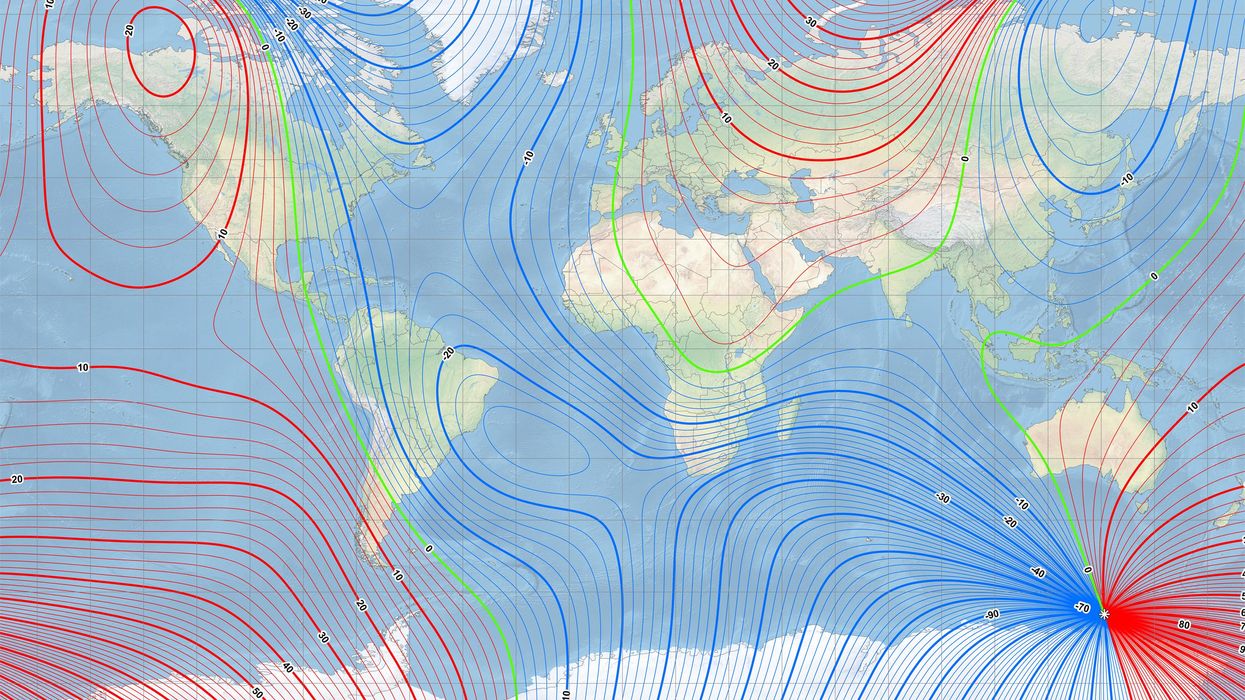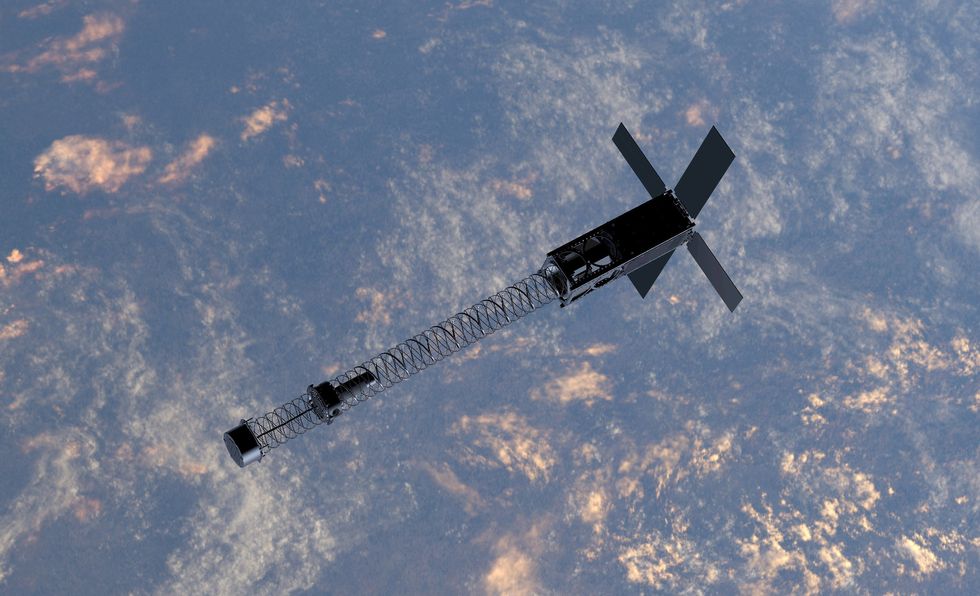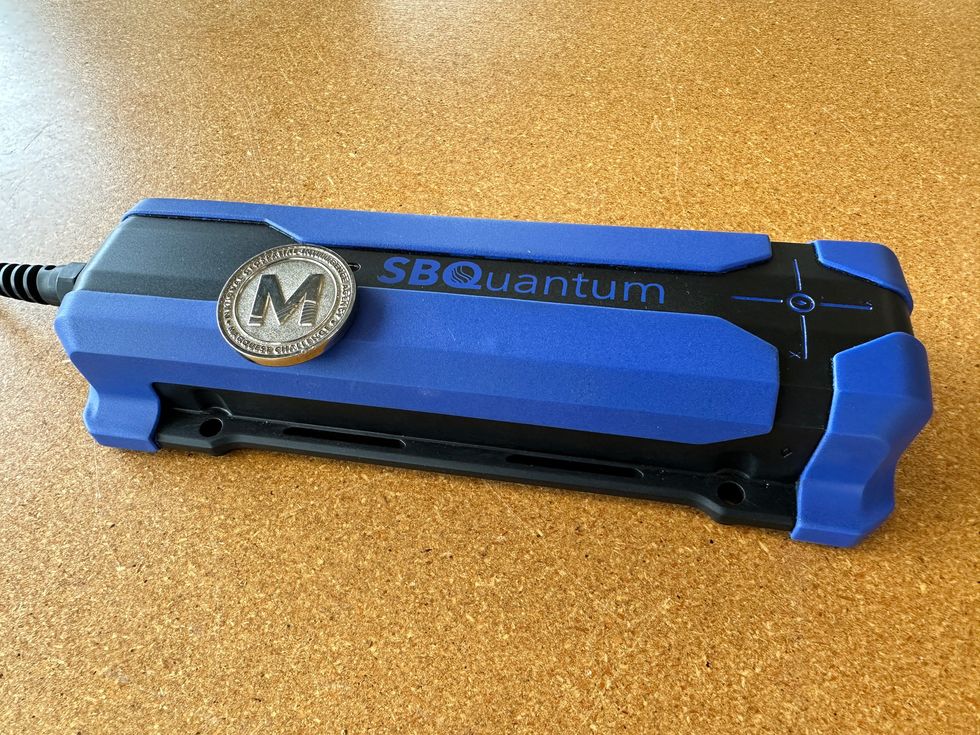U.S. Agency Seeks Better Maps of Earth’s Magnetic Field

The World Magnetic Model is essential for navigation. The model, which compiles precise measurements of Earth's magnetic field at points across the globe into one map, provides data on the constantly shifting magnetic field. But the current system for collecting that vital data is getting old.
Now, a U.S. intelligence agency is in the final stages of a competition to develop new technology to replace that aging system. The hope is to one day produce an even more accurate World Magnetic Model, which is critical given its use in cellphones, aircraft, and military applications. We're using this every day to figure out if we're going left or right," says David Roy-Guay, CEO of SBQuantum, one company participating in the competition.
The World Magnetic Model is the magnetic model used in any and all navigation systems," says Mike Paniccia, the program manager for the model. The map is maintained by the National Geospatial-Intelligence Agency (NGA), part of the U.S. Department of Defense, which releases an updated version every five years to maintain the accuracy of navigation systems. The latest model was issued in 2020.
Currently, the World Magnetic Model relies on the European Space Agency's Swarm mission, which was launched in 2013. Ten years later, the three large satellites are in need of a successor, Paniccia says.
Enter MagQuest, a multimillion-dollar competition conducted by the NGA and the NASA Tournament Lab to seek new approaches to mapping the Earth's magnetic field. The competition-begun in 2019 and led by Paniccia-is now in the midst of its final phase. The agency announced on 27 September that all remaining teams have successfully completed the first part of this phase, which included constructing and testing instruments at NASA's Goddard Space Flight Center. Now, the qualifying teams will build and launch satellites to take these devices into space.
Three teams remain in the competition: tech startup SBQuantum, London-based company Iota Technology, and an engineering lab at the University of Colorado Boulder. Each team has designed its own instrument and a small satellite to house it.
All three teams will launch their devices, known as magnetometers, in CubeSats. These miniaturized satellites are much smaller than Swarm's school-bus satellites," Paniccia says, and the new approach could significantly reduce costs for gathering magnetic-field data. The smaller scale would also make it easier to have backup devices ready to launch. But this unprecedented move still needs to be tested, Paniccia says. Hence, the challenge. What we're trying to do has never been done before."
Shrinking the magnetometers down to fit into a CubeSat is particularly challenging because the instruments tend to be finicky, Paniccia adds. One key complication is accounting for the magnetic signature of the satellite itself; electrical currents from other elements of the spacecraft can induce magnetic fields and introduce noise.
Traditionally, accurate measurements have been achieved by placing two magnetometers on a long boom to separate them from the rest of the satellite's electrical systems. One magnetometer measures the field's magnitude while the other adds information about its precise direction. That's the approach taken by Iota Technology, on a much smaller scale. Compared to the Swarm satellites' 4-meter-long booms, the team's helical boom will extend just 80 centimeters.
 The boom on Iota Technology's CubeSat will extend barely 1 meter from the main body of the satellite, just a quarter of the length of the boom on existing Swarm satellites.Iota
The boom on Iota Technology's CubeSat will extend barely 1 meter from the main body of the satellite, just a quarter of the length of the boom on existing Swarm satellites.Iota
The combination of two magnetometers is a defining feature of the team's design, says Iota founder Hugo Shelley. It allows us to take advantage of the strengths of two different technologies," he says. The one that measures the magnetic field's direction consists of a metal core wrapped in two wire coils. The other records the strength of the magnetic field by detecting changes in the spin of unpaired electrons present in a vapor of alkali-metal atoms oriented by a laser beam.
The CU Boulder team, on the other hand, uses a monolithic system rather than pairing two magnetometers. A lot of magnetometers can do one or the other, accuracy or precision," says Robert Marshall, an associate professor at the university and team leader. Marshall aims to achieve both with a single rubidium-based magnetometer. It works the same way as other alkali-vapor sensors (like Iota's), but with the field's direction derived from coils positioned along three principal axes. And, instead of placing the instrument on a boom, the Boulder team has designed their CubeSat to be as low power as possible to reduce magnetic noise from the spacecraft, which it will carefully characterize before launching.
 SBQuantum has developed a small, diamond-based magnetometer as its solution to map the Earth's magnetic field.SBQuantum
SBQuantum has developed a small, diamond-based magnetometer as its solution to map the Earth's magnetic field.SBQuantum
SBQuantum also uses one device for both magnitude and direction data, employing diamond-based quantum technology to achieve its measurements. The diamond in the sensor is engineered to have a free pair of bonded electrons, which is excited by a laser. The magnetometer can then measure the excited pair's quantum state and derive information about the magnetic field. By using quantum properties, the device also avoids distortions that can result from temperature changes in classical instruments, says CEO David Roy-Guay. The tech startup is now partnering with a previous competitor, Spire Global, to develop the CubeSat for their quantum magnetometer.
The three teams plan to launch their satellites in 2025 to test the technology's viability in space. Following the competition, the NGA plans to enter into a data-purchase agreement with one or more of the MagQuest teams to help create the 2030 World Magnetic Map.